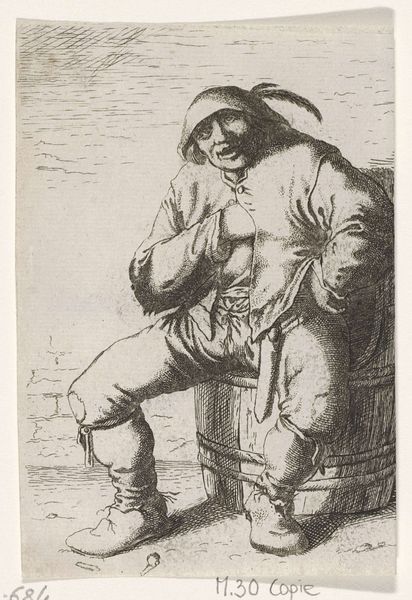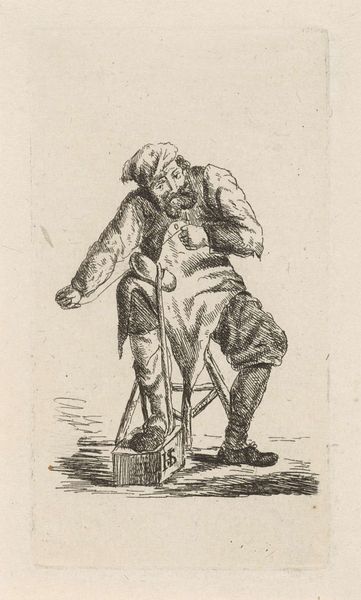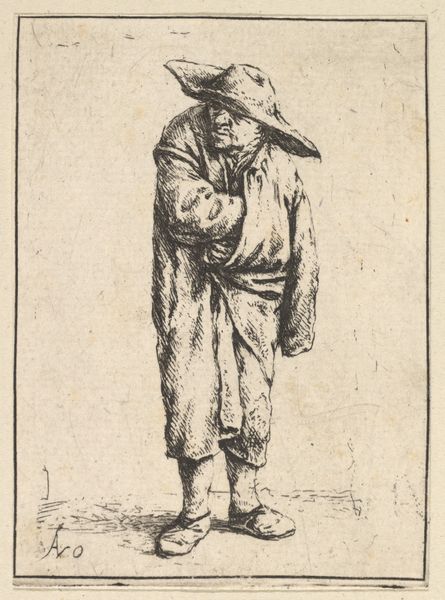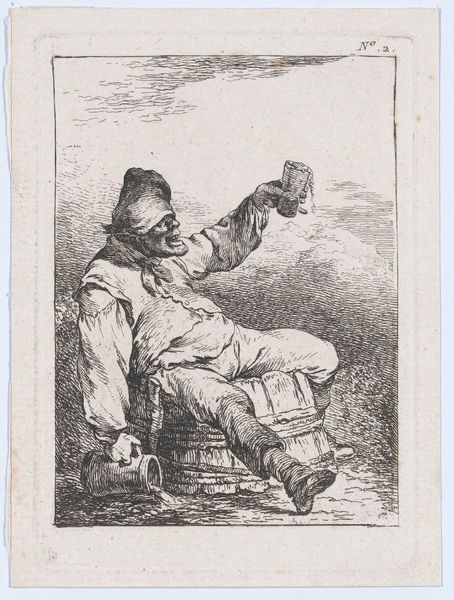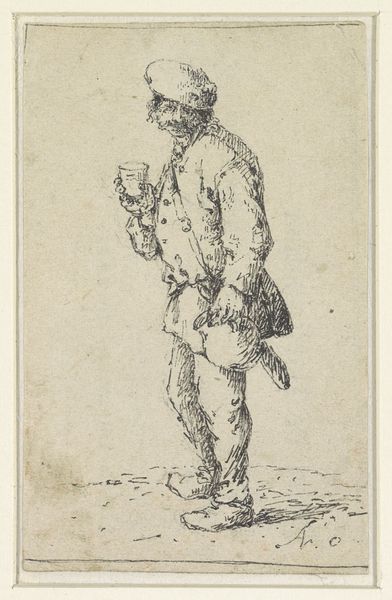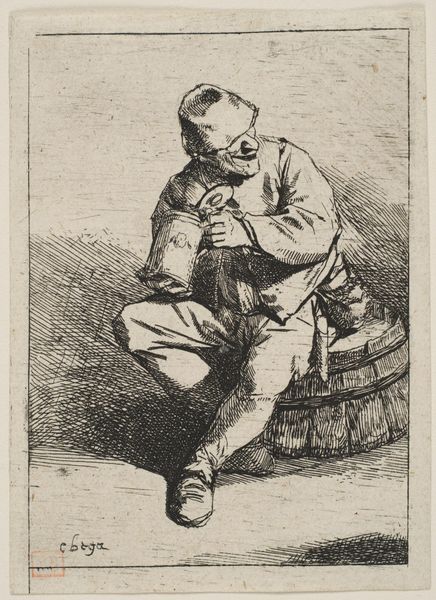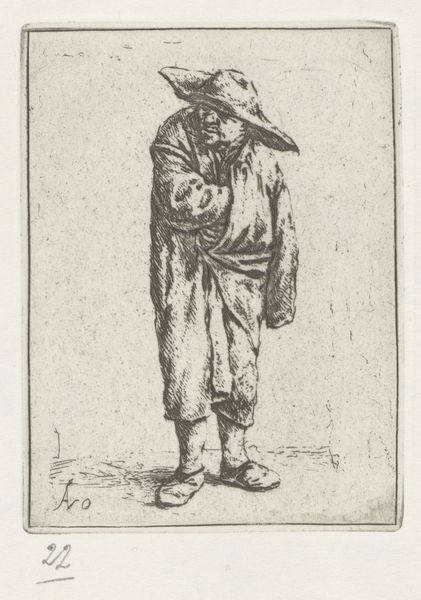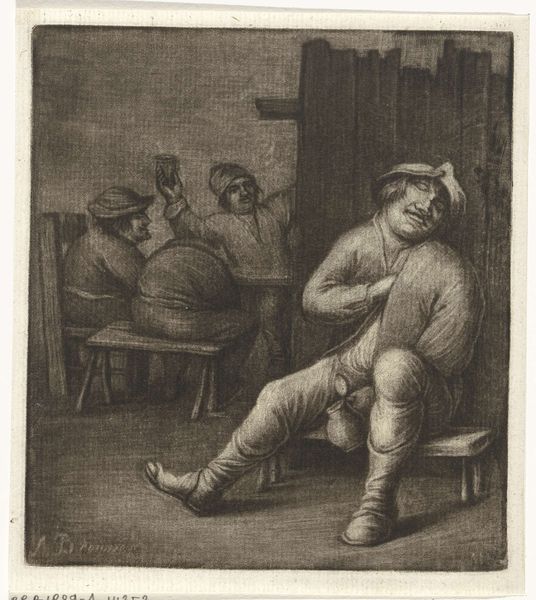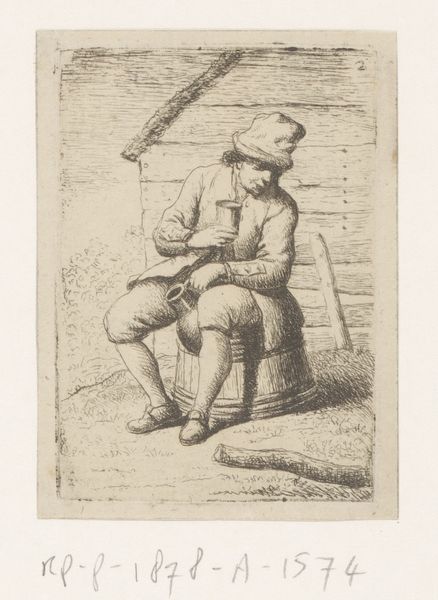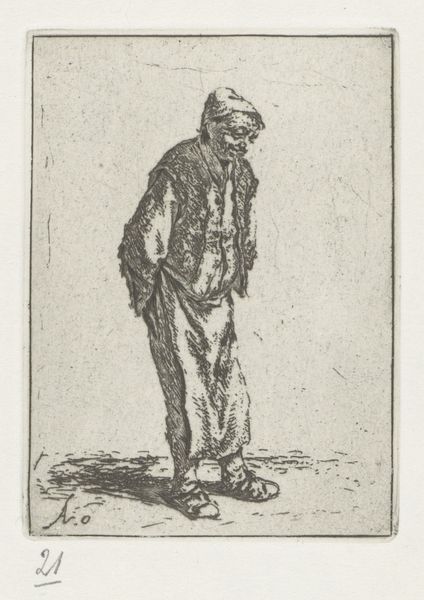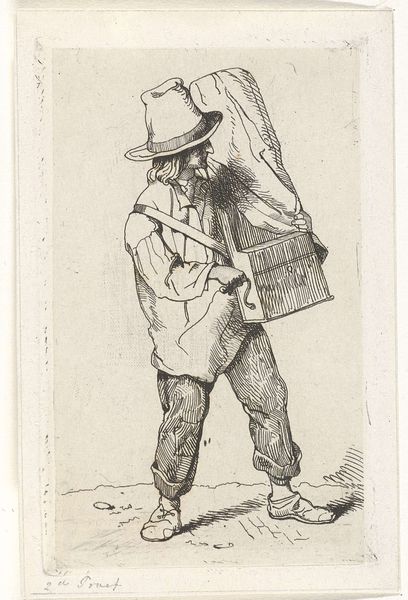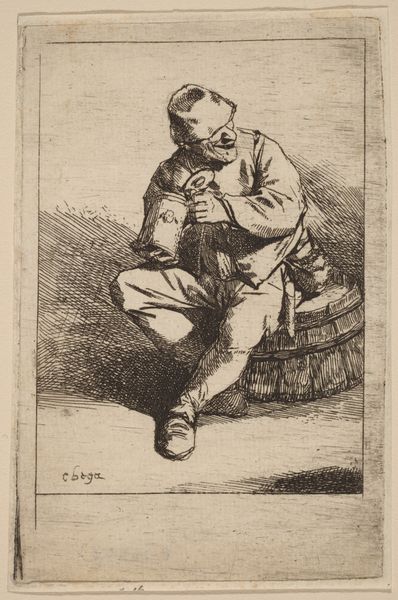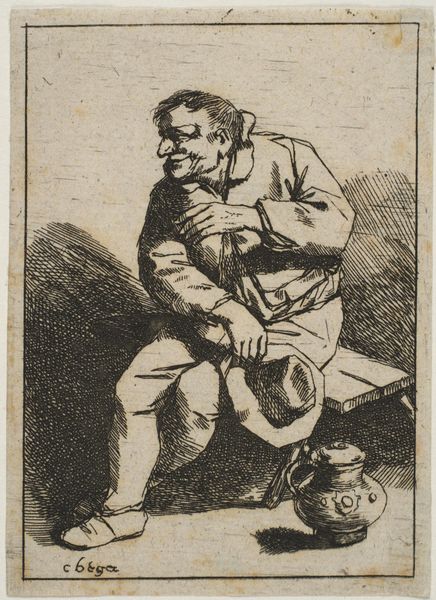
drawing, ink, pen
#
portrait
#
drawing
#
baroque
#
pen sketch
#
pencil sketch
#
figuration
#
ink
#
pen-ink sketch
#
line
#
pen
#
genre-painting
Dimensions: height 116 mm, width 92 mm
Copyright: Rijks Museum: Open Domain
Curator: Let's turn our attention to this pen and ink drawing, "Een man zit op een ton," which translates to "A Man Sits on a Barrel," attributed to Willem Basse, dating from somewhere between 1633 and 1672. It is rather unassuming but, in some ways, captures its period. Editor: Unassuming is a good word. I’m immediately struck by the loose, almost playful quality of the lines. It's sketch-like, very informal. You wouldn’t guess it’s Baroque from a cursory glance; you almost expect something more formal or grand. Curator: Right, Basse's genre paintings are really about depicting ordinary people in everyday scenarios, frequently tinged with a degree of social critique. Consider who would be "sitting on a barrel" during the 17th century. Likely not a member of the upper class. This gives voice and form to social classes that often go unseen and unheard. Editor: Agreed. There is a slight caricature in his depiction, from the facial expression to his clothing, which accentuates the sitter’s individuality. I’m drawn to the masterful play of light and shadow across his form and the barrel—there’s such depth achieved with deceptively simple hatching and cross-hatching. Curator: Absolutely, but don’t overlook the context. During the Dutch Golden Age, representations of the lower classes became increasingly visible. Genre painting often served not just to portray reality but to negotiate the rapidly changing social and economic landscapes of the time. Is Basse celebrating or othering this sitter? The answer isn't readily apparent. Editor: Good point. The composition also is so intriguing! The sitter is precariously perched on the barrel, legs awkwardly arranged; there's a tension in the visual that keeps it from being simple voyeurism. Curator: Right! It reminds us that even seemingly straightforward portraits can serve as vital social documents, providing critical clues to understand and unpack early modern attitudes toward labor, class, and identity. It reveals who society chooses to recognize and how they are framed. Editor: The texture and material rendition are remarkable, truly! It’s amazing how a few deftly placed lines can evoke such a visceral understanding of the different surface qualities. I especially appreciate how the rendering style emphasizes the contrasts and balances in this drawing. Curator: Precisely. So, while its technical skill might initially grab the viewer's attention, ultimately the real draw here is its subtle yet penetrating reflection on societal structures and visibility. Editor: And it reminds us not to underestimate the power of observation. There's something universally human here despite the specific period depicted.
Comments
No comments
Be the first to comment and join the conversation on the ultimate creative platform.
